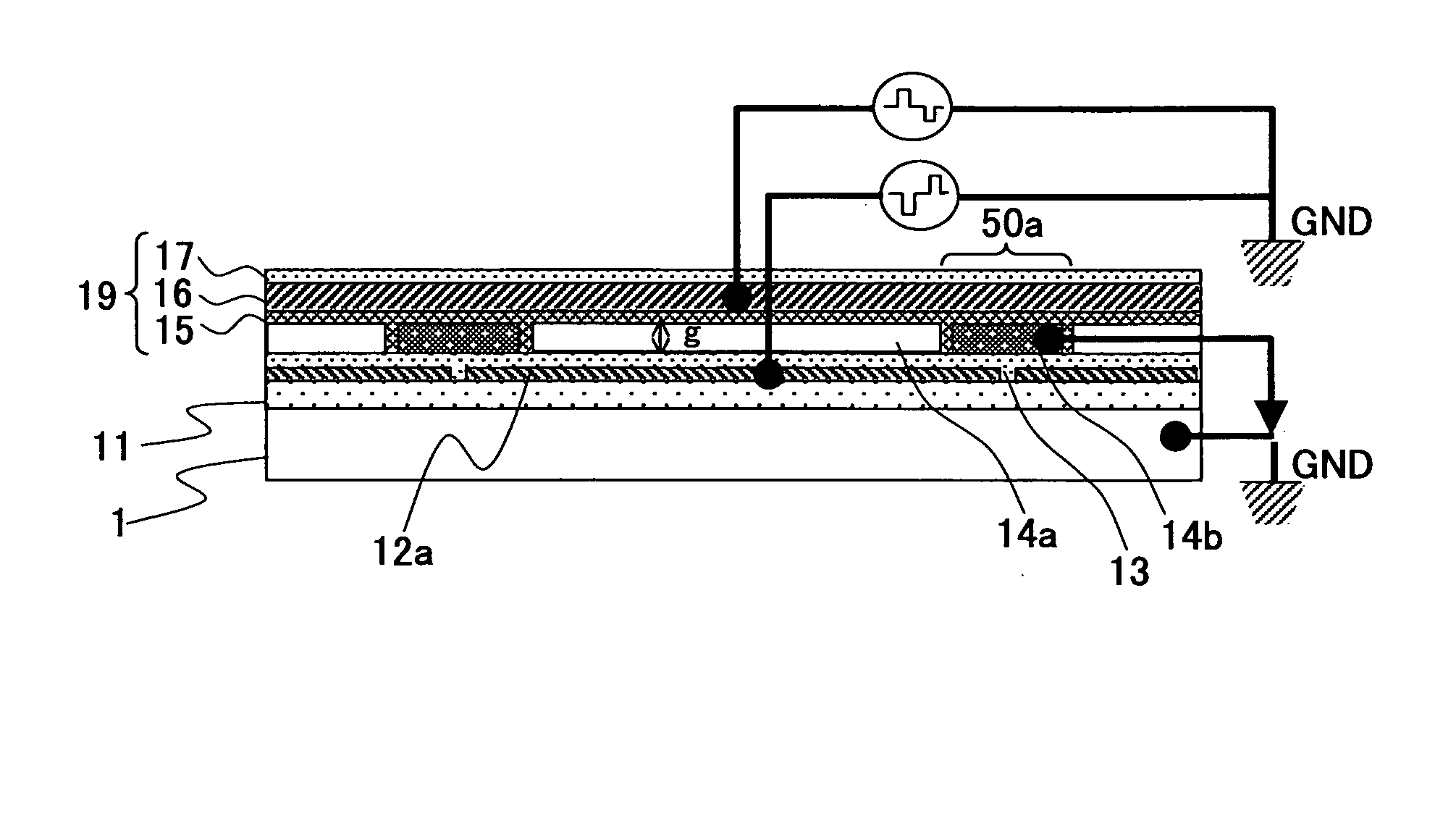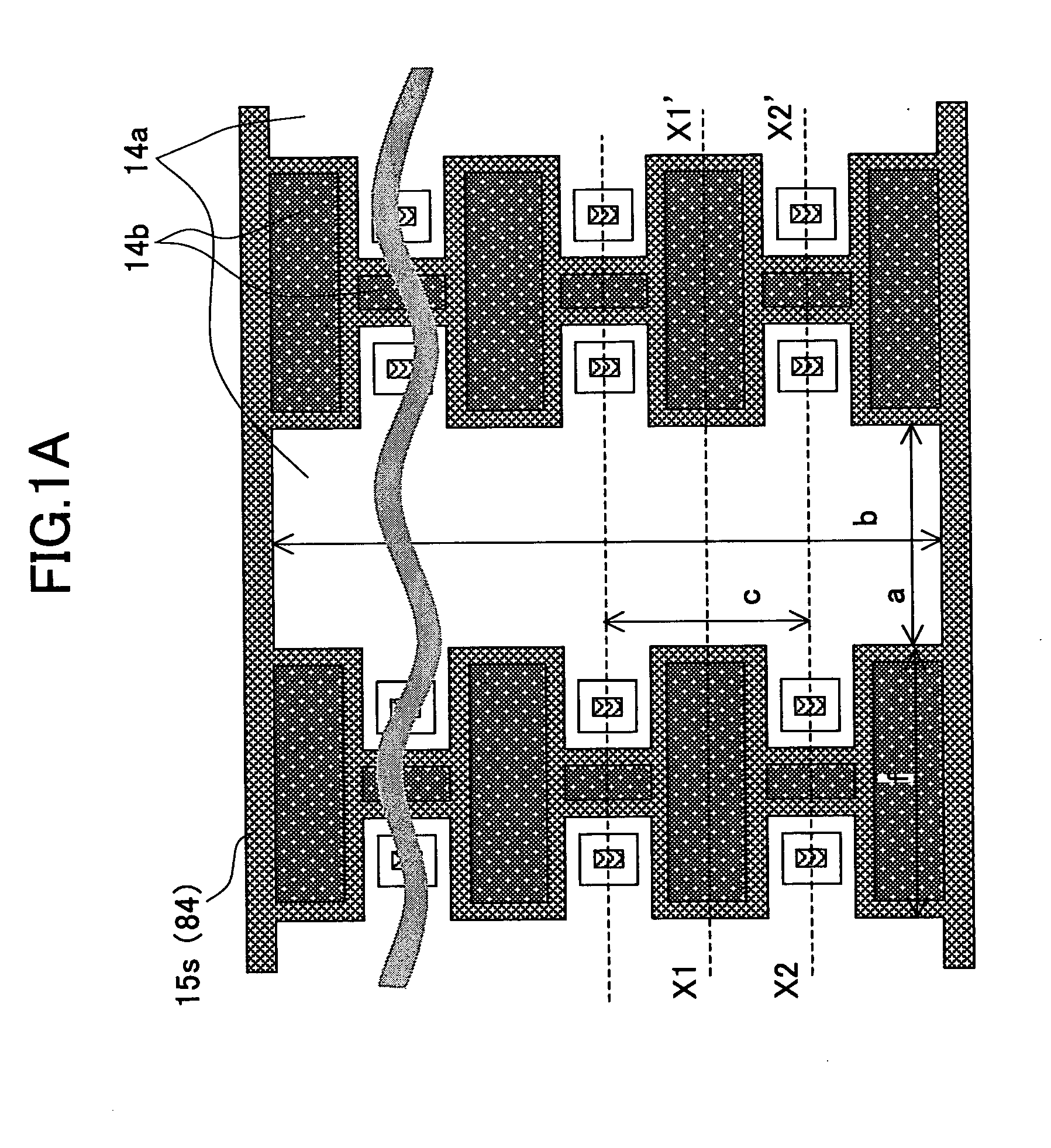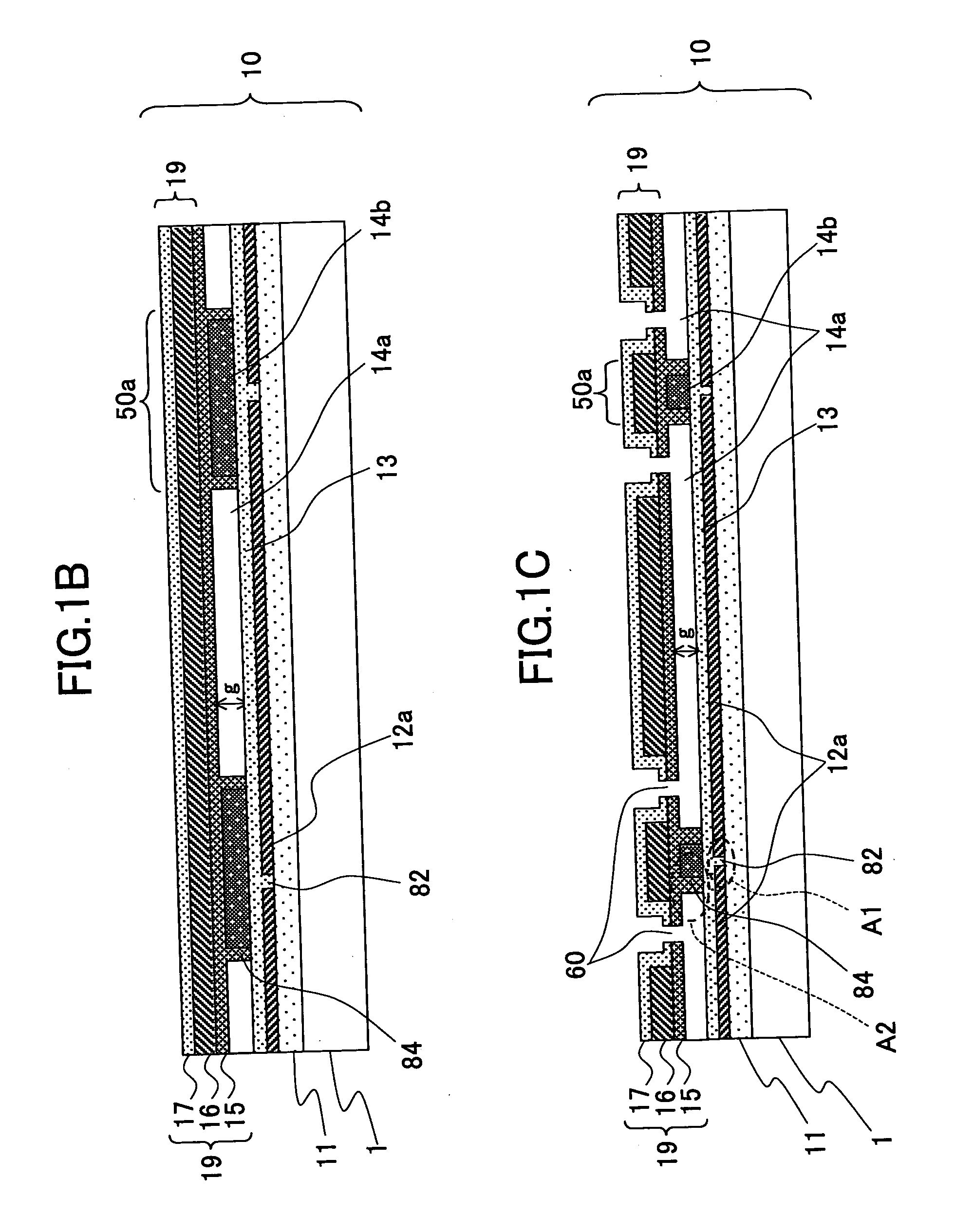Electrostatic actuator formed by a semiconductor manufacturing process
a manufacturing process and actuator technology, applied in the direction of electrostatic generator/motor, mechanical vibration separation, instruments, etc., can solve the problems of low yield rate, difficult to accurately form such a small air gap with little, electrode deformation, etc., and achieve stable performance and less variation in characteristics
- Summary
- Abstract
- Description
- Claims
- Application Information
AI Technical Summary
Benefits of technology
Problems solved by technology
Method used
Image
Examples
first embodiment
[0110] A description will now be given, with reference to FIGS. 1A, 1B and 1C and FIGS. 2A, 2B and 2C, of a first embodiment of the present invention. FIG. 1A is a plan view of the electrostatic actuator according to a first embodiment of the present invention. FIGS. 1B and 1C show cross-sectional views (two parallel cross sections) taken along a line X1-X1′ and a line X2-X2′ in FIG. 1A, respectively.
[0111] In the figures, 1 denotes a substrate which forms an actuator; 11 an insulating layer; 12a an electrode (may be referred to as individual electrode); 14 a sacrifice layer; 15 an insulating layer (may be referred to as a vibration plate side insulating layer); 16 a vibration plate electrode layer; and 17 an insulating layer which also serves as a stress-adjustment of a vibration plate. Additionally, 19 denotes a vibration plate constituted by the insulating layer 15, the vibration plate electrode layer 16 and the insulating layer 17. Further, 14a denotes an air gap formed by remo...
second embodiment
[0128] A description will now be given, with reference to FIGS. 3A and 3B, FIG. 4 and FIGS. 5A and 5B, of a second embodiment of the present invention. In FIGS. 3A and 3B, FIG. 4 and FIGS. 5A and 5B, parts that are the same as the parts shown in FIGS. 1B and 1C are given the same reference numerals.
[0129] In the figures, 1 denotes a substrate which forms an actuator; 11 an insulating layer; 12a an electrode (may be referred to as individual electrode); 12b a dummy electrode; 14 a sacrifice layer; 15 an insulating layer (may be referred to as a vibration plate side insulating layer); 16 a vibration plate electrode layer; and 17 an insulating layer which also serves as a stress-adjustment of a vibration plate. Additionally, 19 denotes a vibration plate constituted by the insulating layer 15, the vibration plate electrode layer 16 and the insulating layer 17. Further, 14a denotes an air gap formed by removing a part of the sacrifice layer; “g” a distance of the air gap; 60 a sacrifice...
third embodiment
[0155] A description will now be given, with reference to FIGS. 6A through 6E, of an actuator according to a third embodiment of the present invention. FIG. 6A is a perspective plan view of an electrostatic actuator according to the third embodiment of the present invention. FIG. 6B is a cross-sectional view taken along a line X1-X1′ of FIG. 6A. FIG. 6C is a cross-sectional view taken along a line X2-X2′ of FIG. 6A. FIG. 6D is a cross-sectional view taken along a line Y1-Y1′ of FIG. 6A. FIG. 6E is a cross-sectional view taken along a line Y2-Y2′ of FIG. 6A.
[0156] In the figures, the reference numeral 1 denotes a substrate for forming the actuator; 11 an insulating layer; 12a an electrode (may be referred to as an individual electrode); 12b a dummy electrode; 13 an insulating layer (may be referred to as an electrode side insulating layer); 14 a sacrifice layer; 15 an insulating layer (may be referred to as a vibration plate side insulating layer); 16 a vibration plate electrode lay...
PUM
 Login to View More
Login to View More Abstract
Description
Claims
Application Information
 Login to View More
Login to View More - R&D
- Intellectual Property
- Life Sciences
- Materials
- Tech Scout
- Unparalleled Data Quality
- Higher Quality Content
- 60% Fewer Hallucinations
Browse by: Latest US Patents, China's latest patents, Technical Efficacy Thesaurus, Application Domain, Technology Topic, Popular Technical Reports.
© 2025 PatSnap. All rights reserved.Legal|Privacy policy|Modern Slavery Act Transparency Statement|Sitemap|About US| Contact US: help@patsnap.com



